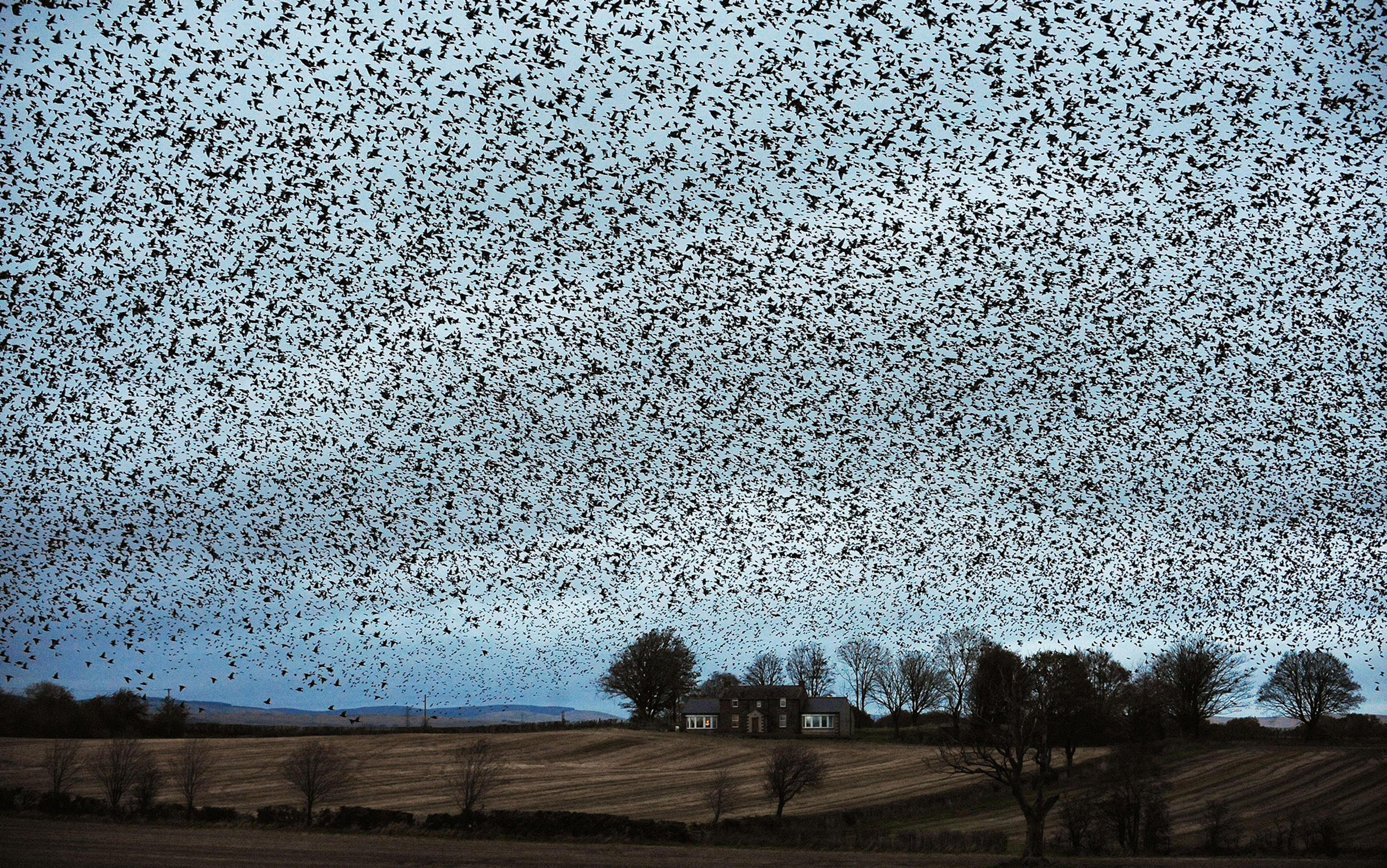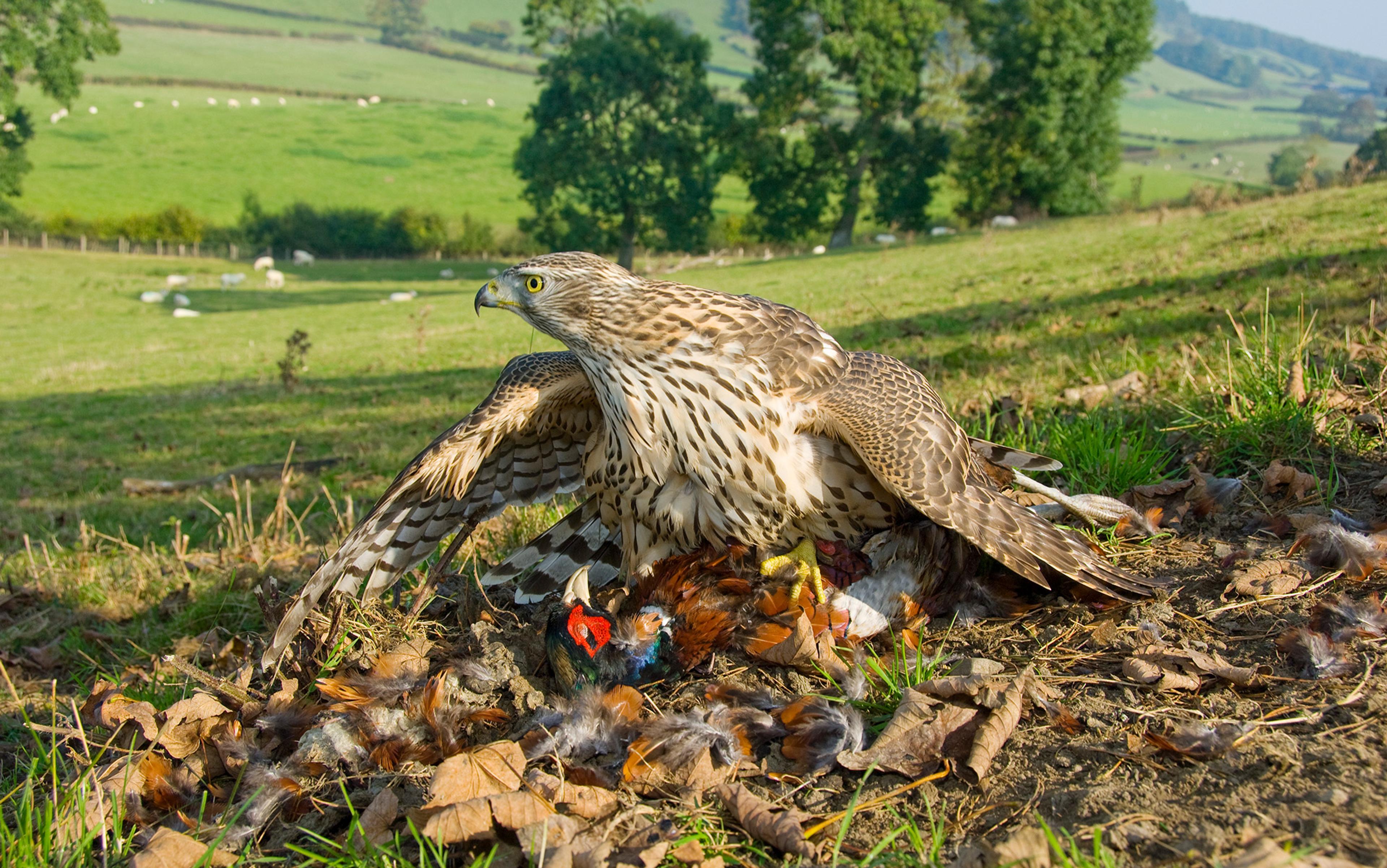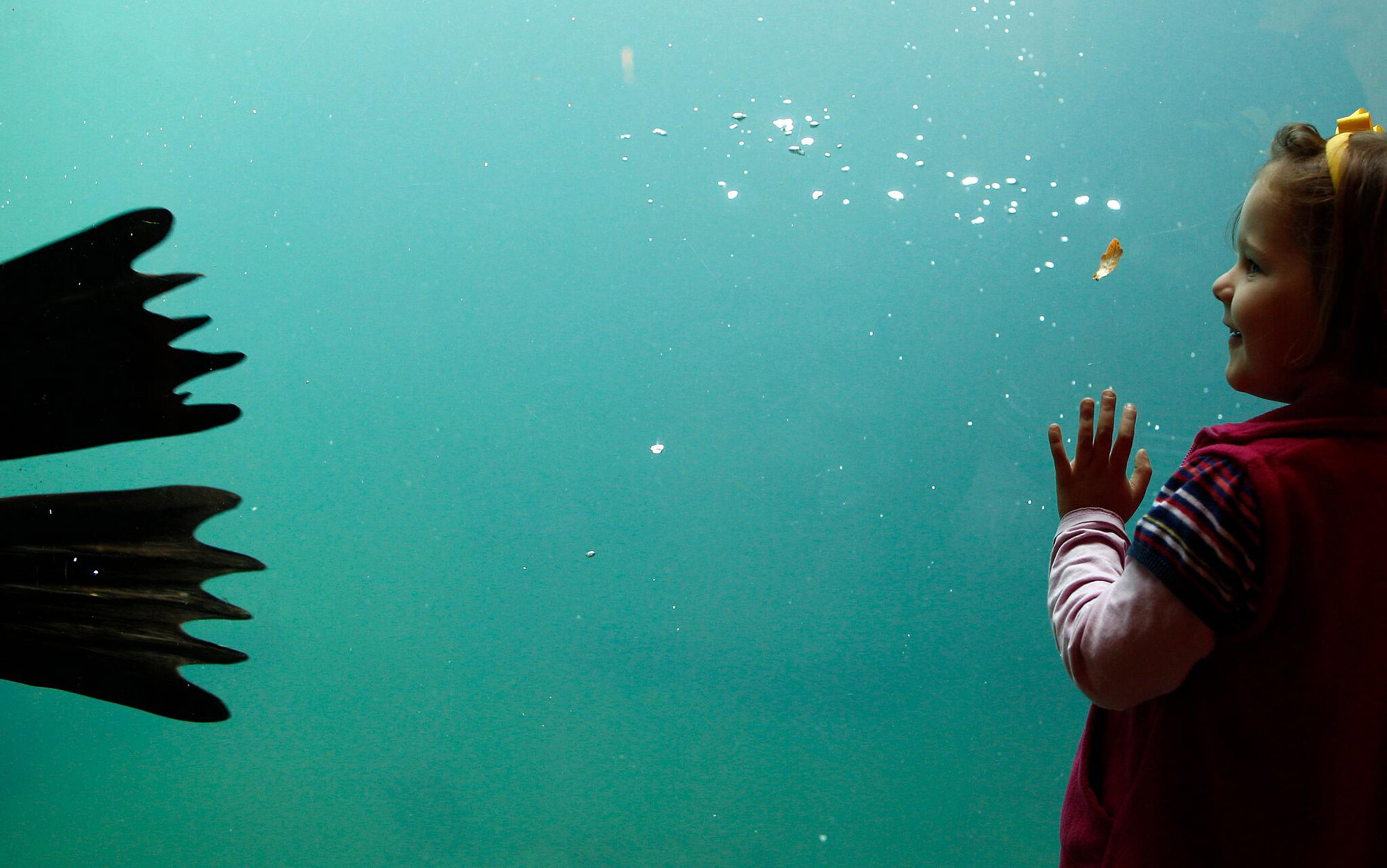In one of the oldest poems in English literature, there is a beautiful moment when a lone sailor, battling against stormy winter seas and his troubled soul, describes how birds have replaced human company for him on the ‘ice-cold way’ – an admission that carries both comfort and sardonic misery. His entertainment is the ‘swan’s song’, men’s laughter is now ‘the gannet’s sound and curlew’s cry’, and the warming tonic of mead is echoed in the ‘gull’s singing’. Where ‘storms beat stone cliffs’, a white-tailed sea eagle yells with the roar of crashing waves. The Seafarer not only provides us with one of our first ornithological references in the English language, but also, most powerfully, the earliest written description of birds evoking place, being associated with a distinct landscape. This poem is not alone, however, in suggesting to us how birds could inspire a feeling for place more than 1,000 years ago. There are other glimpses, beyond the realms of poetry. We need only look around us, at real places. Hidden in the names of towns and villages are the ghostly traces of birds conjuring powerful identities for people in the landscapes and settlements of early medieval England.
We live in medieval places. Quite literally in England, where nearly all towns and villages are very old, and so are their names. The vast majority are Old English in origin (c650-c1100 CE), and go back to a time before the Norman Conquest when Germanic tribes from the continent were colonising and settling land over several centuries, often alongside the Indigenous British populations, whose knowledge and languages were assimilated (though evidence for this is frustratingly scant). A great many Old English place names are toponyms; that is, names that refer to and describe landscape features (others refer to human habitation: Burgh in Norfolk means ‘fortified place’; or individual people: Birmingham, ‘homestead of Beorma’s people’), so the geography of the natural world was very clearly of interest and importance to early place-makers and place-namers. But so, too, were the plants and animals, and we find them everywhere in place names, connected with both ecological habitats and human habitations alike.
Among this rich repository of names, birds rank in their many hundreds as vitalising elements and markers of medieval places – more than any other class of wild animal in fact. Some are immediately obvious in modern spellings, and others are enticingly obscure. Among the cranes and crows, eagles and pigeons and geese (to mention some of the more commonly named birds), there are also less expected species. Who would imagine the mulch-and-mud snipe secretly probing the worm house as place markers in Snitterfield (Warwickshire), or fairy-flitting titmice roving through trees as the spirits of Masongill (Yorkshire), or yellowhammers like fireside embers in the winter hedgerows in Amberley (Sussex)? The sheer number and variety recorded indicate not only what species were known, and where they were present, but that there was something about birds per se that inspired responses and connections to the places where they were encountered. What was it about birds that so caught people’s place-imaginations?
One avian order that demonstrates birds’ place-shaping potential especially well is the owls. They are a type of bird with which I have fond familiarity in this context. My memories of my eldest daughter’s birth and early years are entwined with owl encounters: a tawny owl shook its song from the forest fringes of the hospital car park on the January night when she was born, and we shared night drives looking for owls in the Kentish Weald lanes when she wouldn’t sleep. Earlier this year my family moved house, to an estate just off Ulcombe Road, leading to the tiny village of Ulcombe nestled in a gentle fold of the North Downs. Its name is listed in the Domesday Book (1086 CE), and it means ‘the owl’s valley’. To my delight, I have discovered that the surrounding countryside here is still very owly. We often hear tawny owls from our bedroom, their talon-sharp notes passing through the window and the threshold of sleep. I have discovered a family of little owls that have made their home in the local children’s play park, occupying lookout posts on the swings and slides, and in a small brick barn nearby there are barn owls.
Exactly what species of owl medieval people encountered here when Ulcombe was first given its name is hard to say. Given the number of folk terms for owls that survive from more modern times, they probably did distinguish between species, but the fact remains that our word for this order of birds descends from one of just two Old English words for all owls: ule, pronounced ‘oooo-l’ (the other is uf, of which there are very few records.) Ule is a very ancient, Indo-European utterance. It is imitative, but feels vocative too, even shamanic. If ule is the definitive owl sound, then its most characteristic owner throughout much of Europe must be the tawny owl, the species of owl most of us know today for its immediately recognisable ‘twit-twoo’ refrain (actually two phrases, sung between a female and a male). For our early ancestors, nearly all living rurally and probably close to at least some woodland, tawny owls must have been well-known neighbours. It is certainly the owl that most of us come across now (though rarely see) because it can also inhabit cities and towns.
These aspects of the tawny owl – the origin of its name and the fact that we commonly hear it rather than see it – suggest to us a particularly distinctive way in which birds contributed to premodern ubieties. The onomatopoeic potency of ule implies not only how owls themselves materialised and existed as sound for our ancestors, but that this also affected how people experienced the places in which they heard these sounds. On some level, those places named after owls (Ulgham, Outchester, Oldberrow, Ullenhall, Ullenwood) were identified as soundscapes as much as landscapes, imagined and responded to through sonic texture and colour. It was sound that reified and situated place.
In the case of owls, soundscapes are intensified further when we remember that, by and large, they are birds of night. Their songs and calls are isolated as defining qualities because the birds themselves are cloaked in and disembodied by darkness. The effects of modern light pollution make it easy to forget that once (and not all that long ago) it was a simple condition of people’s lives that night was dark and could only be relieved by the moon or the shadowy flicker of firelight. In our own times, artificial light violates the solar pattern so aggressively that only the most rural or unpeopled parts of our country are spared the star-blinding sky glow. When we speak of ‘dark’ now, it is infected by these dazzling intrusions. The word itself, though, is rooted in a purer, different understanding that traces back through Middle English derk to Old English deorc, and back further to a proto derkaz past. Under those conditions, in a place like Oldcotes (‘owl cottages’) perhaps, we can easily imagine how superstitious medieval folk, waking in the candleless black of cold bedrooms to goblin screeches and hoots, might come to fear owls as vivifying, if rather macabre, denizens.
In Finchale, a flock of flighty finches resonated with dwellers in this nook of land
Most of us now are far less likely to perceive the phenomena of place in these terms. We do experience some birds, such as owls or nightingales, as sound more than anything else, but there is still a hankering for sight above all; a need, as the journalist Mark Cocker puts it in describing his search for birds, for ‘light to make its near-instantaneous journey from [the bird] to me and on to the retina of my eyes’. Other ‘sound birds’ appearing in place names besides owls, however, suggest that our ancestors naturally and happily recognised bioacoustics as foremost and distinguishing properties of a place’s atmosphere. Take bitterns, for instance, those specialists of reed-bed living, who have perfected invisibility through mimicking precisely their hiding places, especially when the bird lifts its beak right up, narrows itself to reed-thinness and sways gently with the wind-rustling stems. We know bitterns best by the eerie, sonorous booming of male bitterns that ‘bombleth in the myre’, as Geoffrey Chaucer describes it in ‘The Wife of Bath’s Tale’. In names like Purleigh (pūr + lēah = ‘bittern clearing’), then, we are confronted again by places defined according to a particular, evocative sound. Even in the 18th century, when the draining of much of the old Fens surrounding the Ouse Washes was already well underway, Daniel Defoe is drawn to ‘the uncouth Music of the Bittern … so loud that it is heard two or three Miles Distance’ as the main point of note on his way through the Holland district of Lincolnshire.
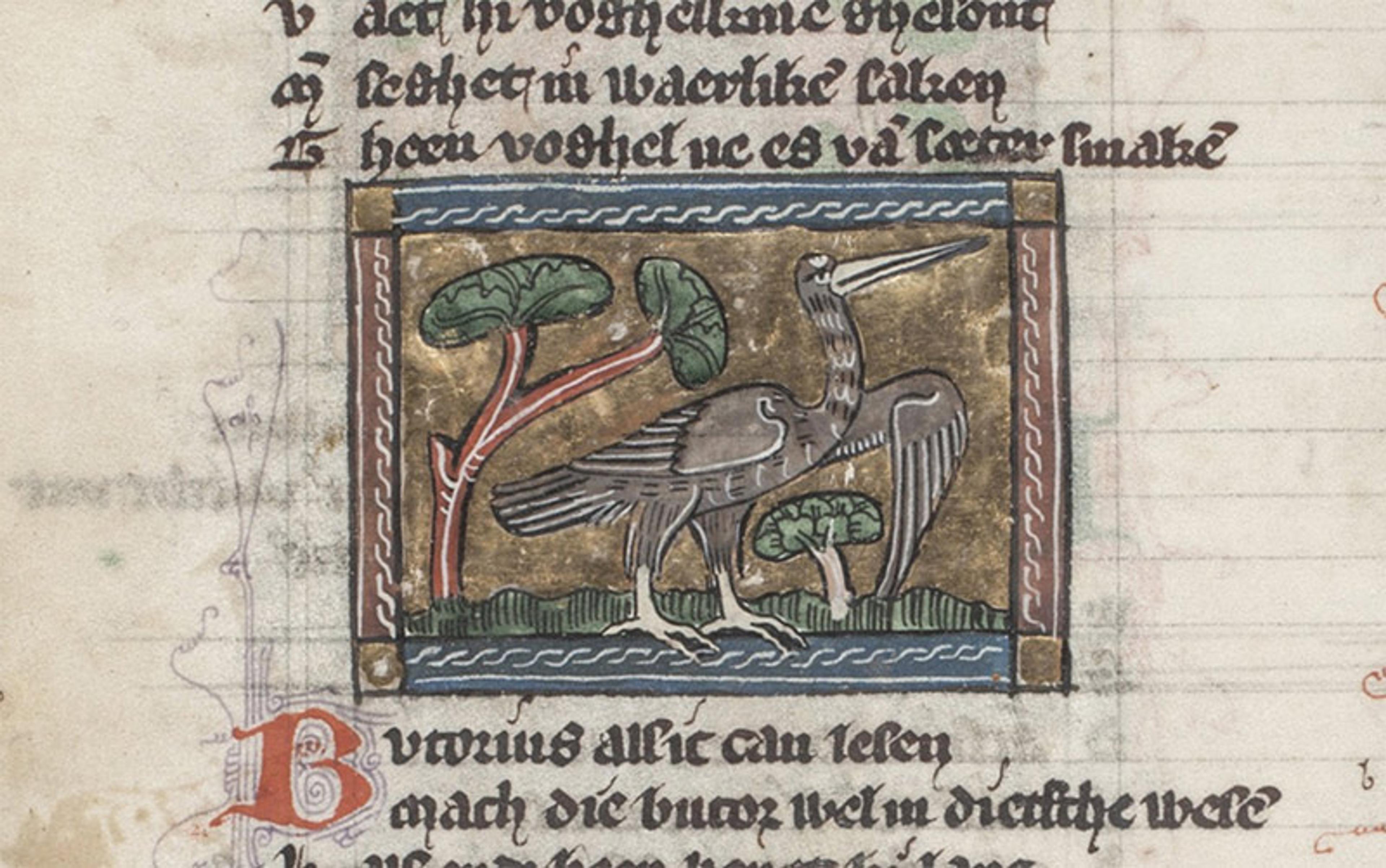
Illustration of a bittern c1350 from Der Naturen Bloeme by Jacob van Maerlant. Courtesy the National Library of the Netherlands
Sound, though, is clearly not the only avian quality that might appeal to place-making sensibilities. Birds are, after all, equally conspicuous by that other distinctive characteristic: their flight. It was something that medieval writers were particularly struck by, forming a key part of their contemplations on birds in natural philosophy encyclopaedias (a sort of equivalent to modern natural history texts). In his 13th-century work On the Properties of Things (De proprietatibus rerum), for instance, Bartholomew the Englishman echoes the words of other medieval theologians when he remarks on how birds’ aerial skills earn them ‘special mencioun [mention]’. There was a magic to bird flight because ‘here ways [their ways] in the eire [air] be not distinguyd in certayne’: ‘aftir their flight the eire closith itself and leueth [leaves] noo signe neithir tokene of here passage.’ It was birds’ habitual dynamism generally, in fact, that engrossed medieval intellectuals. As Bartholomew points out: what is most compelling and noticeable about birds is that they are found in a ‘dyuers [diverse] manere of place’ and have ‘dyuers maner of doynge [doing]’.
Birds’ mobilities confer a particular dimension on place, but in doing so they also produce a curious paradox. Their animateness, especially in flight, is understandably eye-catching to us, but seems inconsistent with marking and characterising the topographies of place, which are, on the whole, firmly located, static and unchanging, in human spans of time anyway. Despite their more showy or predictable habits and appearances (a rookery, a resident sparrow population), birds are good at disappearing or never staying in the same spot for too long. These impermanences would seem to make birds unreliable identifiers of place. And yet there was apparently something about these mobilities, these variable and various movements, that contributed further to the multisensory, multidimensional concepts of place already suggested by our discussion of sound.
That something was there, for instance, in Dunnockshaw (Lancashire), where someone at some time observed little brown birds in a woodland margin, and settled on this as the place’s formative element, and in Finchale, where a flock of flighty finches resonated with dwellers in this nook of land on a bend in the River Wear once in the ancient Anglo-Saxon kingdom of Northumbria. The stories behind these names suggest a mindset that perceived birds’ presences in all forms – a dunnock’s hedge-world business, a goldfinch’s metallic brightness – as part of the totality and momentum of place; a mindset no less willing or adept to conceive these contradictions of place than the profound dualities of their lives at large. The dwelling mind and heart are oriented to the solid sureties of hill and rock, river and tree, but so, too, to flicker and flutter, the form and sweep of fleeting flight, the arc of song. These motions, the action and moment of incident, are place too, and the presence of birds in our old names reveals how their ‘dyuers maner of doynge’ found its way, distinctively and variously, into the encounters, stories and memories that go to the making and history of a place.
This ephemerality of avian presence is perhaps best exemplified when we think about migratory species – birds that take the transitory way of life to a whole other level, such as the cuckoo, which appears in several place names. Like the tawny owl, of course, it has a very distinctive song. Its famous call (immortalised in the medieval song ‘Sumer Is Icumen In’) is equally matched by the bird’s reputation as a herald of summer. Species such as cuckoos and swallows are only present for part of the year in Britain, meaning they were mostly absent from those places that came to bear their names. How was it, then, that they still came to imbue locations such as Swallowcliffe or Yaxley (the Old English for cuckoo is geac, pronounced ‘yay-ack’) with such defining and enduring resonance?
One practical answer is that some of these places were seasonally inhabited; that is, they were sites to which people moved their livestock in summer months (transhumance), arriving at the same time as the birds. Another more imaginative and intriguing possibility is that the seasonal presence of birds such as cuckoos and swallows was so important to human inhabitants awaiting their arrivals that it, more than anything else, animated the very force and being of places. These summer birds bring a place to life, as it were. This idea surely informs the ancient practice of ‘penning the cuckoo’, in which people sought to keep the local cuckoo permanently on their land. Rituals like this, in reality or myth, are inspired by the powerful conviction that a cuckoo’s voice, suddenly sounding one April day from the back end of winter, and just as suddenly ceasing in mid-summer, is somehow spring itself. It is the genesis of the season, and the breath of its invocation calls forth warm and generous life. To prevent the bird leaving in mid-summer is somehow to capture and distil aestival substance, as though the matter of the bird itself is that of this long-day, revolving moment of our year. To name a place after the cuckoo seems to me a similar magic, another sort of hopeful cuckoo capture.
The cuckoo is also a bird that draws attention to a stark and sobering difference between places as they exist now compared with the time of their origins. Cuckoos, like so many British birds that are threatened or extinct, would have been much more abundant in the Middle Ages. Yaxley, on the edge of surviving cuckoo strongholds in the former Fens, would have thronged to their calls. Now these places, and many like them where the birds of their names are absent, are solemnly displaced, the names creaking in the wind like dilapidated pub signs whose buildings have long since closed or fallen into ruin. We can sense that displacement in the sprawl of modern suburban environments too, which, with considerable irony, fashionably assign bird nomenclatures to roads and residential spaces (Sandpiper Drive, Nightingale Way, Lark Rise, Goldcrest Mews…) where the species named are nowhere to be seen, and perhaps never have been. These names, however, are not indicators of how a place is felt and loved, because they are predesigned and imposed externally, rather than accumulated and integral components that are meaningful to those who live in these places.
Our own untethered belonging is at stake and needs rescuing too
For medieval people, there was no such disconnect. The birds in the names really existed; they were truly part of specific places that human inhabitants knew intimately, probably all their lives. As the landscape historian Richard Jones states, our premodern ancestors ‘accepted their total absorption in their environment and readily acknowledged that they were shaped by it’. It is hard for most of us to imagine that degree of absorption now, and the gap or loss between then and now is perhaps the most defining and disconcerting aspect of many of our places now – part of the growing register of loss that permeates everything about our 21st-century ecological circumstances.
In exposing this difference, however, the names also vivify and recapture for us something of the rural past in which birds featured so animatedly, colourfully and noisily, providing a tantalising view into the immersed experiences and knowledge our medieval ancestors had of their local environments. If the purity of old-world darkness added to people’s alertness to the sounds of place, then the comparatively great and varied multitudes of wild species must also have affected their perceptions. Unsurprisingly, there are no records of this sort of thing from the Middle Ages (apart from the observation one could make about how frequently birds turn up in literary texts and in the margins of illuminated manuscripts, which may say something about the ever-presence of these creatures in the medieval peripheral vision). But there can be little doubt that, in premodern Britain, as Jeremy Mynott has written of the classical Mediterranean world, birds were ‘visible and audible at most times of day; occupying all the domains of land, sea and air; and in an abundance and diversity we can only dream of today.’
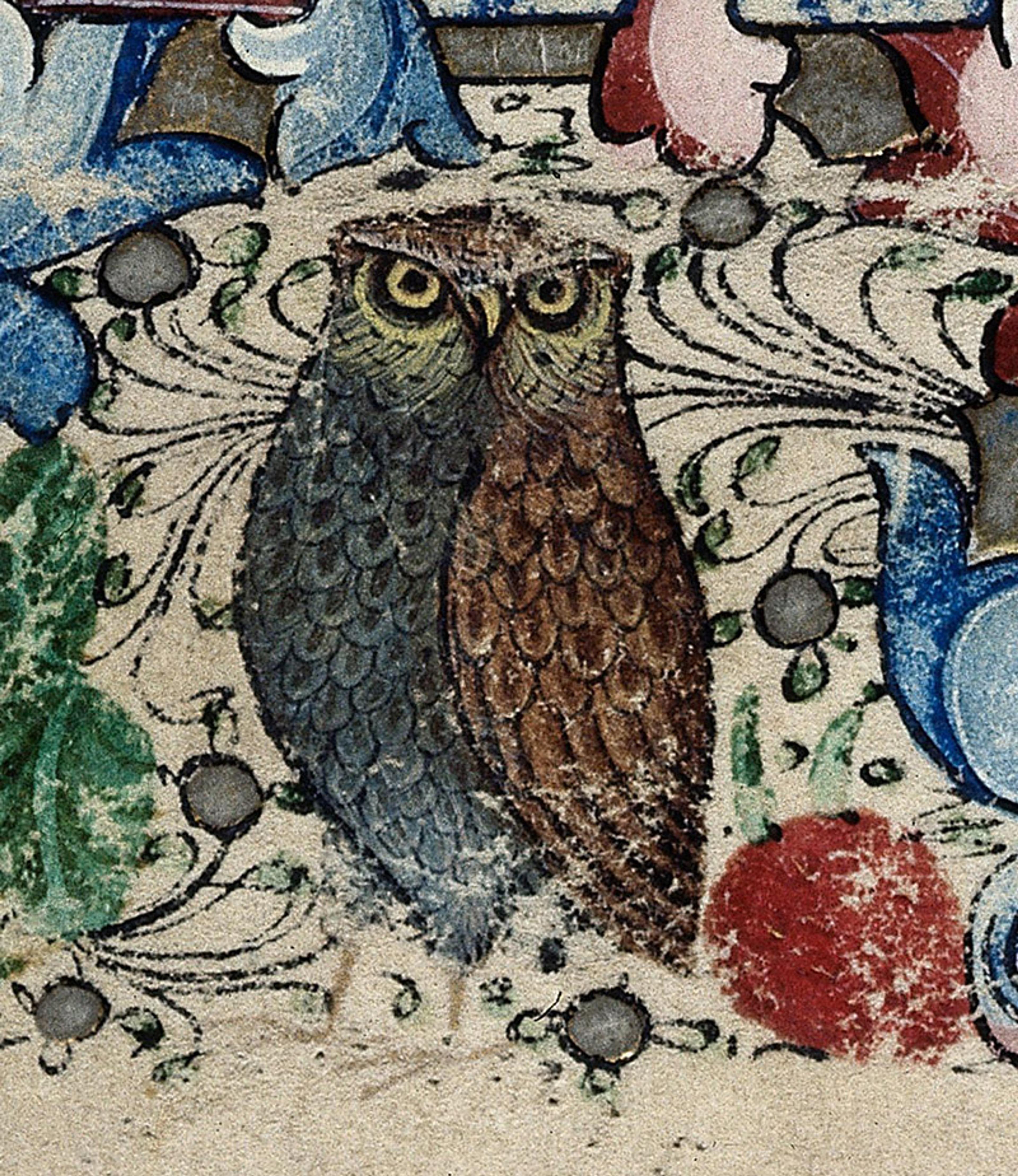
From a Book of Hours, Use of Sarum (The Hours of the Earls of Ormond) c1460. Harley 2887. Courtesy the British Library
And dream we might, but as some indication let’s turn to the Victorian naturalist and writer, Richard Jefferies. In his 1883 book Nature Near London (that is to say, close to urbanity), he writes of being ‘astonished and delighted at the bird life which proclaimed itself everywhere’:
chaffinches are not to be counted; of greenfinches there must be thousands … I caught glimpses of a ploughed field recently sown one spring from the window of a railway carriage, every little clod of which seemed alive with small birds.
And this was in the late 19th century, when modern industrialisation had already begun to alter landscapes and affect wildlife populations. If what Jefferies describes was the case hundreds of years before that (and it was), it is not hard to see how the very life of many places must have seemed palpably charged with and by birds. What sights and sounds there must have been.
In the 21st century, we are increasingly fixed on recapturing these lost natural sights and sounds through reintroduction or rewilding projects. Each of these, as the environmental historian Dolly Jørgensen reminds us, ‘is by necessity a practice that looks to the past’, making place names and the species mentioned in them central to these endeavours. Arguably, what bird place names should alert us to most keenly is not actually the birds themselves, but the rich forms and possibilities of ecological dwelling, which shaped how people perceived and responded to the local worlds around them. There is much to be learned from the glimpses they offer us. Reintroductions and rewildings replace what has been displaced, and in this they help to reconnect severed relationships that were once crucial to meaningful place connections and identities, and could be again. They reinvest belonging where it should be; not only because this or that creature belongs in this or that place, but because our own untethered belonging is at stake and needs rescuing too. We need these spirits of place.
